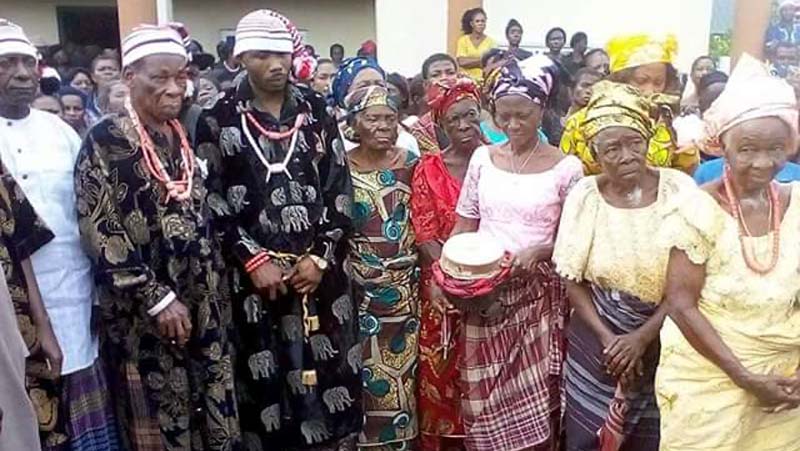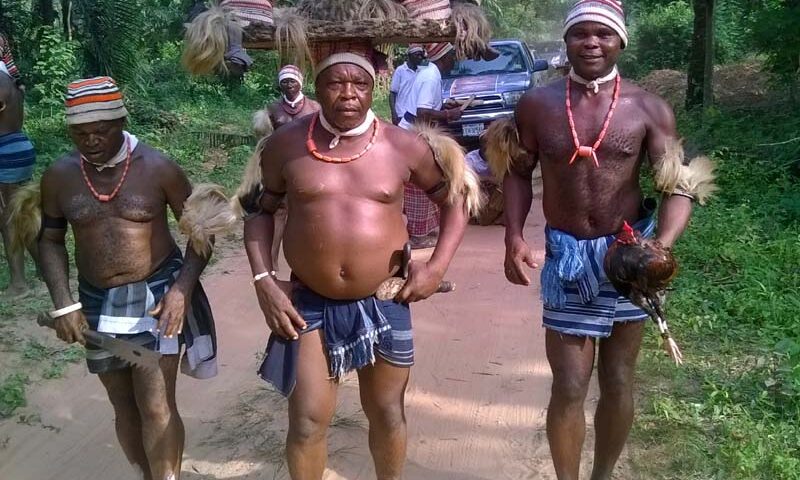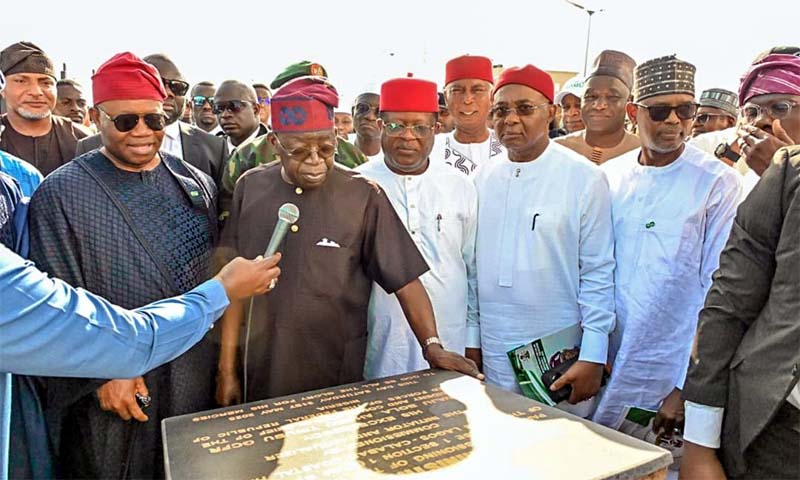The history of Ohafia history is still an ongoing project as much of it is still being recovered from oral tales and scattered but emerging materials.
BY UDUMA KALU (Ed for Use by Njoku SaintJerry A)
Know your history; take time to reach out to your people and reconnect with your roots, there is a sense of pride and confidence in having a deep understanding of your culture, historical exploits and memories of what makes a people strong, weak or withdrawn. Ohafia is a classic cultural community worth the attention and deep study of every sons and daughters, resident and the Diaspora and this brief historical introduction is put together by former Guardian & Vanguard News Editor Uduma Kalu as a preview to a larger historical work in progress.
The history of Ohafia history is still an ongoing project as much of it is still being recovered from oral tales and scattered but emerging materials.
The most important source of Ohafia history has been the Ohafia war songs. There are various aspects of the war chants that reflect Ohafia migratory story. But what is common in such tales is that they are tainted by recent events and loss of memory. The Ohafia tale is not exempted.
The Ohafia oral story of origin begins with a Hebrew origin of the Ohafia, which in a way is derived from a predominant oral story of the Igbo being also of Hebrew stock. More scientific evidence is coming to elucidate on this, showing areas of connections and disconnections with that Hebrew story. But a DNA test so far shows that the Igbo are older even than the Hebrews, though some Igbo also have a Hebrew DNA.
The other aspect of the Ohafia history points to a Benin origin. The war dance chanters failed to explain what they meant by that claim of a Benin origin.
What has come to researchers has been that what is much referred as Benin origin by many people of the coastal areas under the suzerainty of the old Benin Empire has been that the Benin actually referred to the people under the influence and reach of the Benin Empire.
The writer and abolitionist, Oladuah Equiano, said this in his 18th century book, The Interesting Narrative of the life Olaudah Equiano. They were not necessarily of Bini or of Benin stock.
Benin, capital of the old Benin Empire, was like most cities then and now, populated by people and professionals from different places and ethnicities. The Igbo, from different parts of Igbo land, were said to have contributed to the growth and expansion of the Benin Empire. Accounts emerging from peoples from the Benin Empire such as the Urhobo and the Benin themselves point to Igbo war generals that fought for the old Benin Empire. The Igbo actually were in most accounts, frontline soldiers of the Benin Empire. They were among the ones that took the empire to its glory and extent. They were in different professions there such as blacksmithing, farming, soldiery, medicine, trade, diplomacy etc.
Books such as Johnson Crowder’s The story of Nigeria and the old Igbo School Primer, Azu Ndu, have shed more lights on the migration of the Igbo out of Benin. Crowder had pointed at Eze Chime or Chima, the reported progenitor of most Anioma towns, to have been an Aro Chukwu man, a native doctor who sojourned to Benin. He was a priest of the Ibina Ukpabi or Long Juju of Aro. He brought the worship of the juju to that area as well as introduced the use of the Igbo market of Eke, Orie, Afor, Nkwo to Benin. Chime, who had introduced himself to the oba of Benin, was useful to the oba and was an influential tool.
The Oba is said to have been Oba Esegie 1504-1550. It could be earlier. Chima, alongside other Igbo before him, was instrumental to the development of the Benin Empire as he brought professionals from all parts of Igbo land to develop the empire. In no short time, the population grew. However, it was reported that the cordial relationship became frosty due to a royal conflict between the Igbo and the Oba’s mother. Eze Chima, made a chief by the king, could not take the conflict and decided to return back to Aro Chukwu. His followers joined him.
Some reports have pointed out a European visitor’s report, perhaps, a Portuguese, who explained that the Oba became too envious of those that had bigger houses than his. The Oba started asking those with bigger houses than to hand over their homes to him. If they refused, he would have their houses destroyed. One of those the oba approached refused. He destroyed his house. The man went to the East of Benin, brought soldiers who raced down the Oba’s houses and many other houses in Benin. He later departed Benin with his crowd. The description seems to agree with Eze Chima.
Other variants of the Eze Chima origin, as another European wrote, was that Eze Chima was from the area within Agbor. His town was razed down in a war of conquest between him and Benin. He went to Benin and settled before he eventually left Benin.
Still, another said he was from the Nri, across the Niger. An Obomkpa story had pointed at Ogidi as the place but he founded a place also called Ogidi also in the Anioma area. But analysts argue it could be the Agbor town that the Obomkpa version referred to. The two villages in Anioma were said to have been razed down by the Benin.
Actually, the Anioma area was a theatre of wars between the Igbo of that area and the generals of the Benin Empire. Many of the Anioma homes were destroyed and Benin kings imposed on some. Some were therefore vassal villages of Benin Empire.
Were the Ohafia part of the Chima’s entourage?
We may not know. But what we have come to know is that the Ohafia claim in their history that they migrated from the Benin Empire, and were Igbo. Were they part of the many military outposts of the Benin? Their exodus rhymes well with Chime’s time of departure from Benin. The Ohafia were then part of the professionals under Chime responsible for the development of Benin Empire, either as soldiers or as other professionals.
Perhaps, not all of the Ohafia were even warriors in Benin. A book by Mr. Kalu Dike on Idima Abam history, reports that it was at Ndoni that the Ohafia leaders’ children learnt violence when one of his children was killed. To forestall further killings of their kinds, the group learnt to use the cutlass. This could have happened after a long time out of the military position at Owan. Some historians allege that the Owan in the Ohafia tales was indeed Owa, an Ika town, close to Agbor.
The Ohafia people could not have been Aro. Much of the Ohafia dialect actually depicts an Anioma (especially, Ika)origin, showing a link with that area of Igboland. And just like others under various leaders, the Ohafia left Benin Empire, while others stayed back.
Elizabeth Isichei, writing in a book, Introduction to Igbo History, had queried the purpose of the Ohafia people’s migration to where they live today. She could not understand why the people who claimed they came from the Benin Empire would suddenly up and go all the way to their present place without a purpose. It is a far distance. Were they fleeing after destroying the oba’s and other Benin houses?
The Ohafia war songs do not explain the purpose for this journey. The songs make the people look as if they were merely wandering about, presumably looking for a better place to settle.
But even that story in the songs is not enough. Because, there were better lands the people settled in and still left, as they continued in their journey into the innermost part of Igboland.
So, the question is, why did they not settle in those places they saw and settled along the way if they were looking for where to live? Why were they journeying towards Aro Chukwu? In fact, they did not even plan to settle in the present place they are now. They were still eager to move on, perhaps, towards Aro Chukwu when one of their pregnant wives experienced labour and they had to stop. If not, perhaps, the people would have ended up in Aro Chukwu.
This connection now returns the Ohafia migratory story to Eze Chima, journeying back to his Aro home. He died in Obior, in Delta State, close to Ndoni. Most Ohafia tales cannot recall enough of their story before Ndoni. But they can recall when the clan left their original base with that invocation, ‘Mben Bu Zo’, Mben, lift and go. They were to lift their loads, rise up and go.
And they were of Owan, people of smooth face, not of those Igbo with ichi marks. But Owan is today in the Ishan area of Edo state. Does it mean that Owan was an once Igbo town? Yes, records show that some of the Ishan people were assimilated Igbo. Actually, as noted by James Obaro in his seminal work, Niger Delta Rivalry and tales from some peoples of that area, much of Ishan and other places in the Niger Delta were overran and taken over, along with the remaining Igbo in them, by other groups.
So, the Ohafia perhaps, left along with Eze Chima, and were determined to follow him till the end, which was, perhaps, Aro Chukwu.
The Ohafia people were therefore not on a wild goose chase. Rather, they were going to Aro Chukwu. But as it happened to his other followers when Chima died, the Ohafia also settled elsewhere. The departure and eruption of migrations out of Benin actually caused so much population upheavals in Igboland which is yet to be properly recorded.
Before the Benin flight of Chima was the Obatala and Oduduwa war that led to the migration of the Igbo out of Ile Ife, the reported cradle of the Yoruba, reported in the book, Cradle of a Race, Ife.
The Igbo were said to be the original owners of Ife, according to the book and Yoruba oral traditions.
Next came the rise of the Benin Empire, which was facilitated by slavery. This disrupted the Anioma population.
But the biggest upheaval of the Igbo would become the arrival of the Ohafia and its neighbours later in their present place, perhaps, in the 15th to 16th century. This was due to the people’s later contact with the Aro Chukwu. The slave wars that resulted perhaps produced the biggest slave story in the world as well as the cause of the biggest population shift in Igboland, Middle Belt and in The Niger Delta in the last 500 years.

OHAFIA, A BRIEF PROFILE
The above is the preamble to the Ohafia story which the war songs do not reflect. The Ohafia profile recounted here is derived from an account by the Ohafia Monarch, the late Udumaeze Onuoha Mba along with some other accounts from members of the Onyirimba age grade in their 2016 Igba Uche publication, entitled Elevation 2016: Igba Uche Festival Magazine of Onyirimba Age Grade-Isiugwu Ohafia-Abia State.
The monarch, just like the Ohafia war song, describes the Ohafia people as a group of adventurers, who against all odds, succeeded in founding for themselves a permanent home in the place now called Ohafia. This account though without any archaeological findings is based on popular oral traditions and few available materials. The oral parts were derived from the war songs.
The ancestors of the Ohafia, the publication asserts, must have had a beginning, say in the old Benin Empire. Obviously, they must have also had some connection with other groups that were not Ohafia people. Since, Ohafia is Igbo, it goes without saying that Ohafia has a common origin with other Igbo ethnic groups,
In their quest to find a permanent abode, the publication notes that the people sojourned through many lands, namely Benin Empire, Ndoni, Ibeku, Bende etc. A prominent thing that happened at Ndoni in today’s Rivers state, was the demise of their leader, Akpo Uku. This death bequeathed the leadership responsibility to his son, Atita Akpo Uku. From Ndoni, the journey was said to have continued to Isieke Ibeku.
The story jumps the Ikwerre and Etche routes of the journey as depicted in the dialect of the Ohafia. It is silent also on the cultural influence of these stops on the people. It is silent on the years it took them to reach Isieke Ibeku. Perhaps, a hundred years story is contracted into one single leap.
But at Isieke Ibeku, some Ohafia persons soon resorted to acts of mischief. Deprived of the influence of their leader, minor disagreements with their Ibeku and Leru neighbours easily got out of hand. The laying of sharpened knives across footpaths for offensive rather than defensive reasons became rampant. The ring leader in this gambit was a man called Ukoha. Both Leru and Ibeku people were uncomfortable living with their Ohafia neighbours because of these mischievous inclinations.
During this period, there was a fighting between sections of what is today Umuahia and Ossa Ibeku people. The Ossa people sought refuge with the Ohafia people of Umuajiji in Isieke Ibeku. An attack was being planned against the Ohafia people by the Ibeku people. The son in law of Ukoha, the trouble maker, who was present at the meeting of the Ibeku, revealed the plot to Ukoha. Ukoha took immediate action, alerting the Ohafia of the planned attack on them.
Although people beefed up security, an ominous event occurred that ended their stay in Ibeku.
There are several accounts as to the reason for this exodus. One said it was because of the barking of a dog caught in a trap that frightened an Ohafia woman named Mgbo to raise an alarm.
This alarm led to a stampede that evacuated Ohafia people from Isieke Ibeku.
Another version said it was a string of calabashes making shattering noises. This version seems to be more correct as idiomatic tongue twister coined by the fleeing Ohafia refers to this incident of the collapsed string of calabashes, ‘aka metu ngu. Ngu metu oba. Oba me kpogoro. Uso su Mben, su Leru. Leru na uso, Mben n’uso.’.
This sudden flight was explained by the fact that the Ohafia people were at the time living in a state of tension and anxiety, in view of the pending attack by the Ibeku people. When the Ohafia people assembled at the spot of alarm later, they feared that calamity would likely overtake them if they did not find their way out of Ibeku. So, they took to flight for safety.
On a second thought, the Ohafia people realised that they had no strong reason for the sudden flight out of Ibeku as it showed apparent cowardice. It would sound unbelievable that such bold warriors like the Ohafia people could be terrified by such common place occurrence like the cutting of string of calabashes. In order to cover up this glaring cowardice, the fleeing warriors made up the idiomatic tongue twister which when recited to any enquirer left the person confused.
It is pertinent to emphasise that though we are referring to the Ohafia as a single group, they were not only a single Ohafia group. Indeed, at Ibeku, the sons and daughters of their ancestors are yet to be all known. Dike in his history of Idima Abam listed some, including the progenitor of Itumbuzo, Ututu and Abam. They were still others that stayed back at Ibeku while some went further to become Lokpanta among others. But for convenience sake, we have bracketed all of these different families that have also become different ethnic nations as Ohafia for the purpose of our publication.
Meanwhile, the fleeing people made a brief stop at Bende. They sojourned at the Okputong Section of Bende to sort themselves out before resuming their trek. It is important to note that the leaders of the group were Ezema Atita and his younger brother Onyerubi Atita, their father Atita Akpo Uku having died of natural causes in Isieke Ibeku.
At a point in the journey, Orie, wife of Onyerubi Atita found it difficult to continue due to labour pangs. Onyerubi, therefore, was obliged to terminate his journey in order to keep his family company. The place was cleared for a permanent settlement and that place became known as Amaelu Abam.
Ezema Atita, on the hand, pressed on towards toward his unknown destination with the rest of the adventurers. He finally arrived at a place called Ugwumgbo in today’s Elu Ohafia. He decided to settle and build an independent community of Ohafia people.
Not long after, Ezema Atita died and his son, Uduma Ezema was then responsible for whatever arrangement for a permanent settlement. This is why Ohafia is to have been founded by Uduma Ezema and not Ezema Atita who physically piloted the migrants from Isieke Ibeku to Elu Ohafia.
The story that follows is a classic story of how the name Ohafia came to be, how the people began to disperse and settle over the land they found and founded for themselves. This is the expansion and occupation of the land by the Ohafia people. It is a story of wars and peace yet to be told.

OHAFIA WAR DANCE
Ohafia culture is not complete without reference to the heroic escapades of the people’s forebears in the art of war.
In those years, when wars were wedged with cudgels, machetes, knives, arrows, Ohafia warriors were unrivalled.
Respect for male folks was hinged on one’s ability to defend one’s territory by displaying exceptional prowess in the various battles that raged among distant communities. Some warriors became mercenaries to assist neighbouring communities to overwhelm their enemies.
Today, Ohafia people remember the victories of those years by staging, during important events and as mark of honour, the famous Ohafia war dance. The war dance has become and remains an identity for the Ohafia people..
Apart from the age grades which were recruitment grounds for war, there were also war guilds, which were always at hand in the defence of the land. The groups were the nucleus of the art of war in Ohafia. They were the Ndi Ikpo, Ndi Ite Igbo, Ndi Ite Odo, native doctors, etc. Yet, they were all groups under the name, Ndi Ikpo as they worked and associated together.






